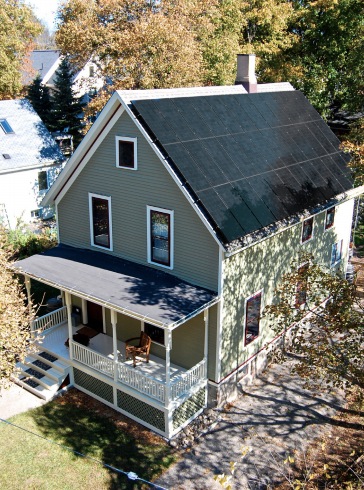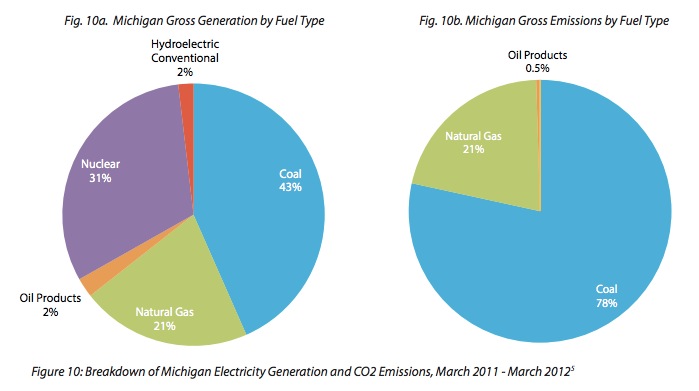CITY OF ANN ARBOR
 Buildings accounted for 41 percent of the primary energy consumption in the United States (22 percent from residential buildings and 19 percent from commercial buildings) in 2010. The energy used in buildings contributes significantly to GHG emissions in the City of Ann Arbor and makes up 77 percent of the City’s total emissions. In order to reach the goal of 25 percent reduction by 2025 or substantial reductions in the future, the City of Ann Arbor and its residents need to reduce energy use in buildings through energy efficiency, and the use of renewable and low-carbon energy sources must increase dramatically. The efficiency of new buildings will need to be addressed through design guidelines and standards.
Buildings accounted for 41 percent of the primary energy consumption in the United States (22 percent from residential buildings and 19 percent from commercial buildings) in 2010. The energy used in buildings contributes significantly to GHG emissions in the City of Ann Arbor and makes up 77 percent of the City’s total emissions. In order to reach the goal of 25 percent reduction by 2025 or substantial reductions in the future, the City of Ann Arbor and its residents need to reduce energy use in buildings through energy efficiency, and the use of renewable and low-carbon energy sources must increase dramatically. The efficiency of new buildings will need to be addressed through design guidelines and standards.
This section is broken up into three subcategories:
Higher Performing Buildings refers to actions that will increase efficiency in new and existing buildings within our community. Energy used in buildings is determined by a variety of factors including insulation level, building type and age, window age and size, air sealing, appliance and equipment efficiency, and heating and cooling systems. Eighty percent of Ann Arbor’s buildings were built before 1976. Since older buildings are typically less energy efficient, the City must focus its efforts to reduce GHGs by implementing strategies that drive retrofits and improvements into these buildings.
Number of Higher Performing Buildings Actions: 13
…
Energy Source refers to the transition from centralized high-carbon energy sources to low or no carbon technologies. While relying exclusively on 100 percent renewable sources of energy is a goal for Ann Arbor, certain transitional sources and technology should be utilized to help bridge the gap. Currently, the City relies almost exclusively on centrally controlled electricity generation/distribution and natural gas. Some Energy Source actions deal with innovative approaches like district heating, or combined heat and power (CHP), while others allow for a more gradual shift to renewable energy sources.
Number of Energy Source Actions: 6
…
Renewable Energy is obtained from resources that cannot be depleted, such as wind, tidal, hydro, and solar. The State of Michigan Public Act 295 of 2008 requires Michigan electric providers to supply at least 10 percent of their electricity sales from renewable resources by 2015. Residents and businesses can also generate their own electricity using solar, wind, or geothermal systems on their own property, or they can participate by opting into DTE’s Green Currents program. Major advancements in the utilization of renewable energy is essential to any plan seeking to mitigate greenhouse gases.
Number of Renewable Energy Actions: 6
…
Download full chapter: Buildings and Energy
About the City of Ann Arbor
www.ci.ann-arbor.mi.us
The City of Ann Arbor is committed to providing excellent municipal services that enhance the quality of life for all through the intelligent use of our resources while valuing an open environment that fosters fair, sensitive and respectful treatment of all employees and the community we serve.
Tags: Ann Arbor, City of Ann Arbor, MI, Michigan, Renewable Energy







 RSS Feed
RSS Feed